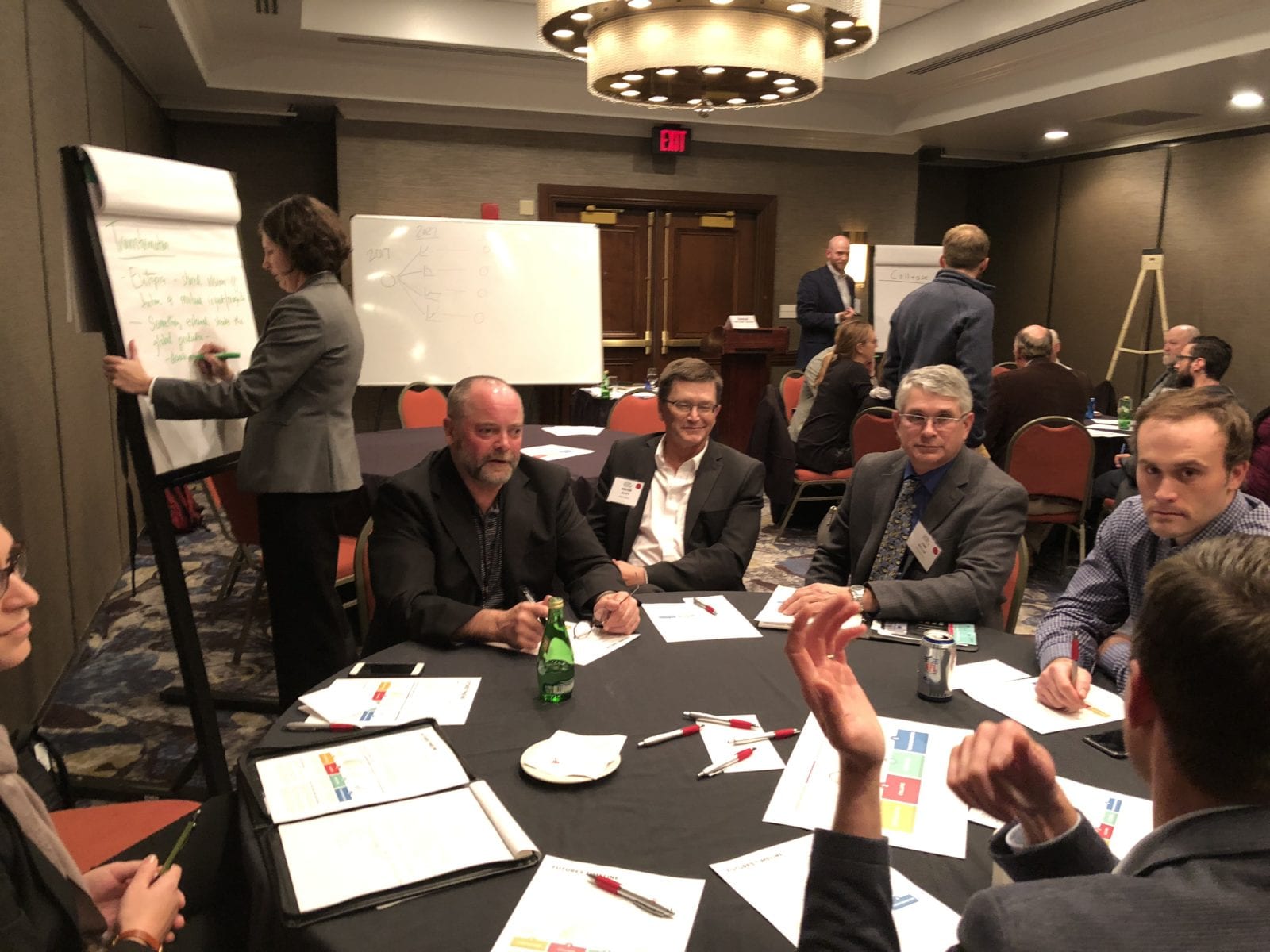USSEC Holds 2nd Annual International Marketing Dialogue
- Category:
- General News

USSEC held its second annual International Marketing Dialogue in St. Louis on November 28 and 29. Stakeholders of U.S. Soy, including USSEC members and grower leaders, attended the two-day event.
The event is a forum for members to provide input and feedback on USSEC’s strategy and focus as the organization begins its FY19 planning.
The first day focused on providing stakeholders with a deep dive into the U.S. Soy industry.
USSEC CEO Jim Sutter welcomed attendees and new United Soybean Board (USB) CEO Polly Ruhland talked about international markets and building demand, citing the importance of customer service and satisfaction.
“Soy leadership is not afraid to tackle challenges, and one of the biggest is to increase export demand for our products,” Ms. Ruhland stated. “I think one of the smartest ways to drive enhanced value for U.S. Soy is to have a relentless focus on end users. Understand what they want and meet those needs. In other words, a complete customer mindset as we move forward.”
USSEC consultant and economist John Baize addressed worldwide soybean production and demand. Since 2001, demand for U.S. soy is up 229 percent.
China has been a driver in soybean exports worldwide, he stated, adding, “If anything, it’s growing at a faster rate than it was.” The Asia Subcontinent’s rise, Mr. Baize continued, looks similar to China’s, although he cautioned that it is a different type of market and is much more protection-oriented than China. He also pointed to Mexico as a key market for soybean meal and said that Southeast Asia has shown phenomenal growth in soybeans and soybean meal, with the Philippines being the number one market for U.S. soybean meal last year. Colombia has posted a whopping 900 percent increase in U.S. Soy imports since the implementation of the U.S. – Colombia Trade Promotion Agreement (CTPA), which took effect in 2012.
Regional directors provided an overview of each region.
Sarah Smith, Research Director, Food Futures Lab Institute for the Future, talked about translating strategic foresight into action. “We are wired to think about more about the past than the future – it’s cognitive anchoring. If we come from limited experience, it’s even harder for us to imagine a future without limits self-imposed from our experiences,” Ms. Smith stated.

Following Ms. Smith’s presentation, attendees participated in a strategic foresight exercise conducted by BigWideSky, which helped to generate a signal report for the U.S. Soy industry. During day two, stakeholders were able to determine how signals could create new opportunities for utilization areas, potential outcomes that could be inspired by these signals, and how signals helped expand mindset in creating strategy.

That evening, participants enjoyed a networking reception and dinner at the newly completed Monsato global R&D Center of Excellence in Innovation.
On day two, groups split into breakout sessions that covered market access, oil and human utilization, and animal and aquaculture utilization.


The market access group elected Ryan Findlay of Syngenta as its chair and Lucas Blaustein of CGB as its vice chair. Key discussion items included China, sustainability, free trade agreements, and maximum residue levels (MRLs).
The animal and aquaculture group elected Andy Tauer of the Soy Aqua Alliance as its chair and Tori Sorenson of Insta-Pro International as vice chair. Key discussion items included challenges with soybean meal, segmentation of the India and Bangladesh markets; competition between feed companies on price based on crude protein; global soy demand and U.S. market share challenges; quality and sustainability; in-country feeding trials; aquaculture in China; the International Aquaculture Feed Formulation Database (IAFFD); customers seeing technologies in the marketplace without being told about them; and Canada.
The oil and human utilization team elected Bob Sinner of SB&B Foods as its chair and Anita Florida of CHS as vice chair. Key discussion themes included educational and promotion of nutritional and health benefits of U.S. Soy; defining traditional and non-traditional soy food market types for each country; the perception of Canadian soybeans as higher quality than those of U.S. Soy; new CODEX conversion factors for soy protein; and worldwide market opportunities for human utilization and oil, including hotels, restaurants, and institutions (HRI), the food industry, and feeding programs.
The industry utilization groups work together throughout the year.
Daniel Whitley, Associate Administrator of the U.S. Department of Agriculture's (USDA) Foreign Agricultural Services (FAS) spoke during the closing luncheon.

